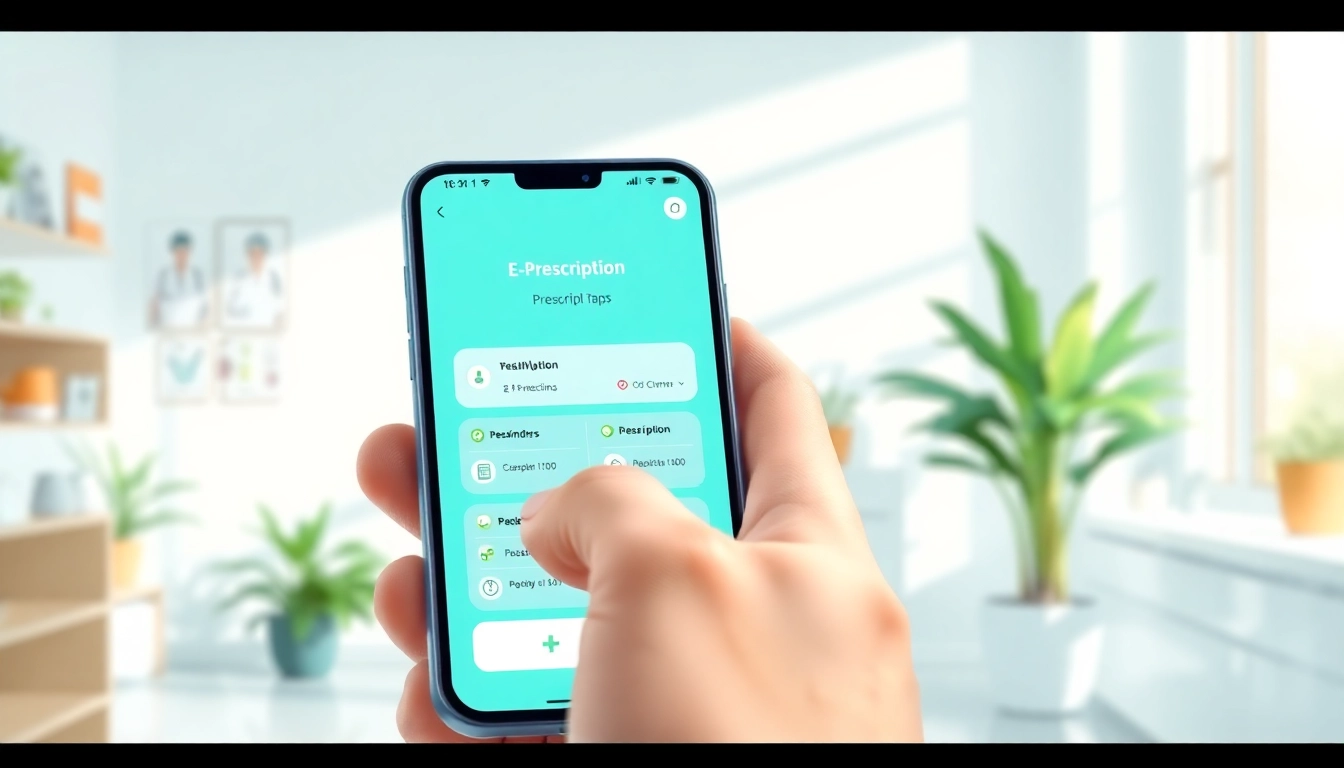The Basics of E-Prescription Apps
What are E-Prescription Apps?
E-prescription apps are digital tools that facilitate the electronic transmission of prescriptions from healthcare providers to pharmacies. They are designed to enhance the efficiency and accuracy of the prescribing process, which has traditionally involved paper prescriptions. By leveraging technology, these apps aim to minimize errors, streamline communication, and improve patient adherence to medication regimens.
How E-Prescription Works
These apps operate by digitizing the prescription workflow. When a healthcare provider determines that a patient needs medication, they input the prescription details into the e-prescription system. This information is then securely transmitted to the patient’s preferred pharmacy and stored digitally in the patient’s electronic health record (EHR). This integration allows for real-time updates on prescription status, reducing the risk of misunderstandings and errors that can occur with handwritten notes.
Understanding User Interfaces
The user interface of e-prescription apps is crucial for ensuring that both providers and patients can navigate them easily. A well-designed app will display clear options for prescribing, tracking medications, and viewing patient history. Features like alerts for potential drug interactions, refill reminders, and personalized health information dashboards improve user experience and promote adherence.
Advantages of Using E-Prescription Apps
Improved Patient Adherence
One of the substantial advantages of using eprescription apps is improved patient adherence to medication regimens. These apps often include features that remind patients when to take their medications, provide dosage instructions, and even alert them when it’s time to refill prescriptions. This increased engagement has shown to enhance treatment outcomes significantly.
Convenient Medication Management
E-prescription apps offer a more convenient way for patients to manage their medications. Users can easily request refills, view past prescriptions, and even track their medication history—all from their smartphones. This eliminates the need for cumbersome paperwork and allows patients to keep their medication needs organized in one accessible location.
Real-Time Prescription Tracking
In contrast to traditional prescription methods, e-prescription apps provide real-time tracking of prescriptions from the moment they are issued by a healthcare provider until they are picked up at the pharmacy. This transparency fosters confidence in the patient-pharmacy relationship and allows for immediate resolution of any issues that might arise during the prescription fulfillment process.
Challenges Associated with E-Prescription Apps
Technology Integration Issues
Despite their benefits, e-prescription apps can face integration challenges with existing EHR systems. Lack of compatibility may lead to inefficient workflows or data loss, hindering the system’s overall efficacy. Healthcare institutions must prioritize interoperability when selecting e-prescription solutions to mitigate such challenges.
Patient Privacy Concerns
E-prescription apps deal with sensitive patient information, and with the increase in data breaches and ransomware attacks, privacy remains a significant concern. It is paramount for app developers and healthcare providers to implement robust security measures, including encryption and access controls, to protect patient data.
Limited Access in Rural Areas
Though e-prescription apps enhance the healthcare experience in many urban settings, rural areas may still struggle with limited internet access or insufficient technological infrastructure. This gap could hinder the adoption of e-prescription technologies, leaving a significant portion of the patient population without these conveniences.
Best Practices for Implementing E-Prescription Apps
Choosing the Right App
Selecting an appropriate e-prescription app involves considering various factors such as user interface design, integration capabilities, and the specific needs of the healthcare facility. Conducting a thorough evaluation of available solutions based on features, costs, and feedback from current users can lead to a satisfactory choice.
Training Healthcare Staff
Successful implementation of e-prescription apps necessitates comprehensive training for all healthcare staff. Ensuring that everyone—from physicians to administrative staff—is well-versed in the app’s functionalities will facilitate smoother adoption and foster a culture of technology-driven healthcare.
Collecting Patient Feedback
Regularly collecting and analyzing patient feedback can help healthcare providers identify areas for improvement within their e-prescription systems. By understanding patient experiences with the app, providers can make necessary adjustments to enhance usability and functionality, ensuring that it meets the users’ needs effectively.
Metrics for Measuring Success
Tracking Prescription Accuracy
One fundamental metric for assessing the effectiveness of e-prescription apps is tracking prescription accuracy. Monitoring discrepancies between prescribed medications and what patients receive can provide insight into the reliability of the app and highlight any areas for process improvement.
Evaluating Patient Outcomes
Evaluating patient outcomes post-implementation can provide essential data on the app’s impact on medication adherence and overall health improvement. Analyzing parameters such as hospital readmission rates, condition stabilization, and patient satisfaction levels will inform stakeholders of the app’s effectiveness and areas needing enhancement.
Analyzing User Engagement
Lastly, assessing user engagement with the e-prescription app can yield valuable insights regarding its adoption and success rates. Metrics such as frequency of use, active users over time, and feedback scores can indicate how effectively the app is serving its user base and inform strategies for increasing usage and satisfaction.



